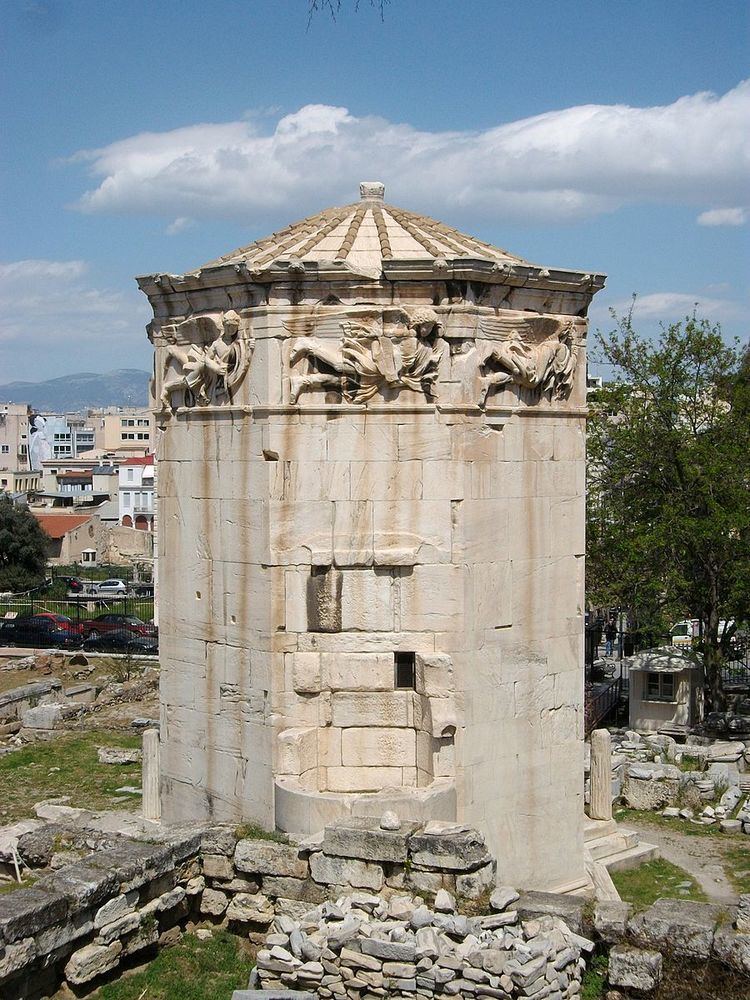Phone +30 21 0321 9776 | ||
 | ||
Address Aiolou, Athina 105 55, Greece Hours Open today · 8AM–5PMTuesday8AM–5PMWednesday8AM–5PMThursday8AM–5PMFriday8AM–5PMSaturday8AM–5PMSunday8AM–5PMMonday8AM–5PMSuggest an edit Similar Roman Agora, Ancient Agora of Athens, Temple of Olympian Zeus - Ath, Theatre of Dionysus, Hadrian's Library | ||
Tower of the winds
The Tower of the Winds or the Horologion of Andronikos Kyrrhestes is an octagonal Pentelic marble clocktower in the Roman Agora in Athens that functioned as a horologion or "timepiece". Unofficially, the monument is also called Aerides (Greek: Αέρηδες), which means Winds. The structure features a combination of sundials, a water clock, and a wind vane. It was supposedly built by Andronicus of Cyrrhus around 50 BC, but according to other sources, might have been constructed in the 2nd century BC before the rest of the forum. In summer of 2014, the Athens Ephorate of Antiquities began cleaning and conserving the structure; restoration work was completed in August 2016.
Contents
Gb vatican tower of the winds michelangelo s s creation 1 11 10
Site
The 12-meter-tall structure has a diameter of about 8 metres and was topped in antiquity by a weathervane-like Triton that indicated the wind direction. Below the frieze depicting the eight wind deities — Boreas (N), Kaikias (NE), Eurus (E), Apeliotes (SE), Notus (S), Lips (SW), Zephyrus (W), and Skiron (NW) — there are eight sundials. In its interior, there was a water clock (or clepsydra), driven by water coming down from the Acropolis. Recent research has shown that the considerable height of the tower was motivated by the intention to place the sundials and the wind-vane at a visible height on the Agora, effectively making it an early example of a clocktower. According to the testimony of Vitruvius and Varro, Andronicus of Cyrrhus designed the structure. The tower's columns bore capitals of a design now known as "Tower of the Winds Corinthian," although they lack the volutes ordinarily found in Corinthian capitals.
In early Christian times, the building was used as the bell-tower of a Byzantine Church. Under Ottoman rule it became a tekke and was used by whirling dervishes. At that time it was buried up to half its height, and traces of this can be observed in the interior, where Turkish inscriptions may be found on the walls. It was fully excavated in the 19th century by the Archaeological Society of Athens.
Several buildings are based on the design of the Towers of the Winds, including:
